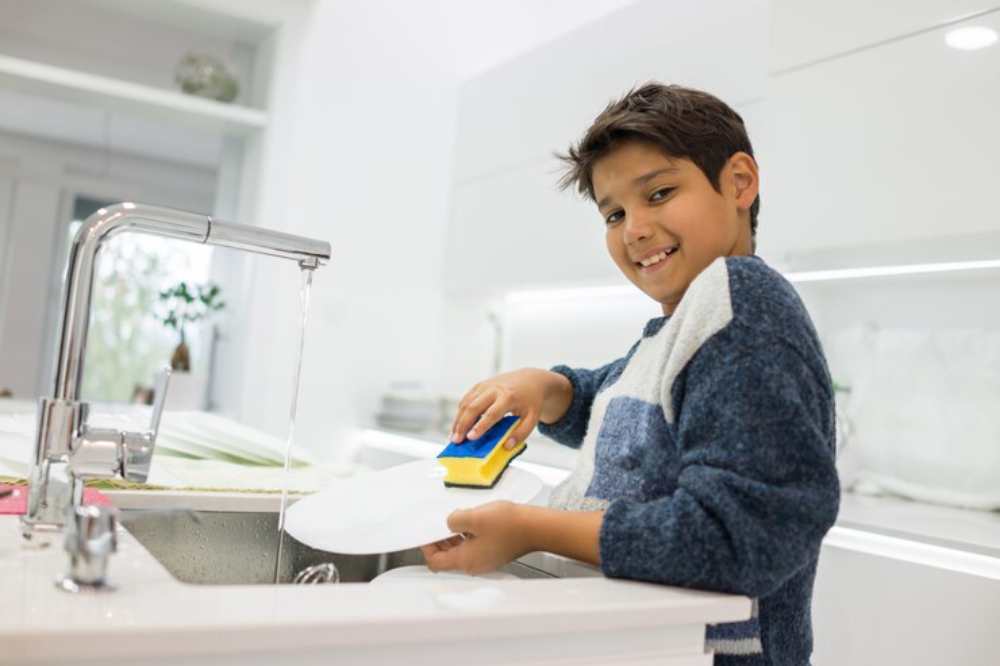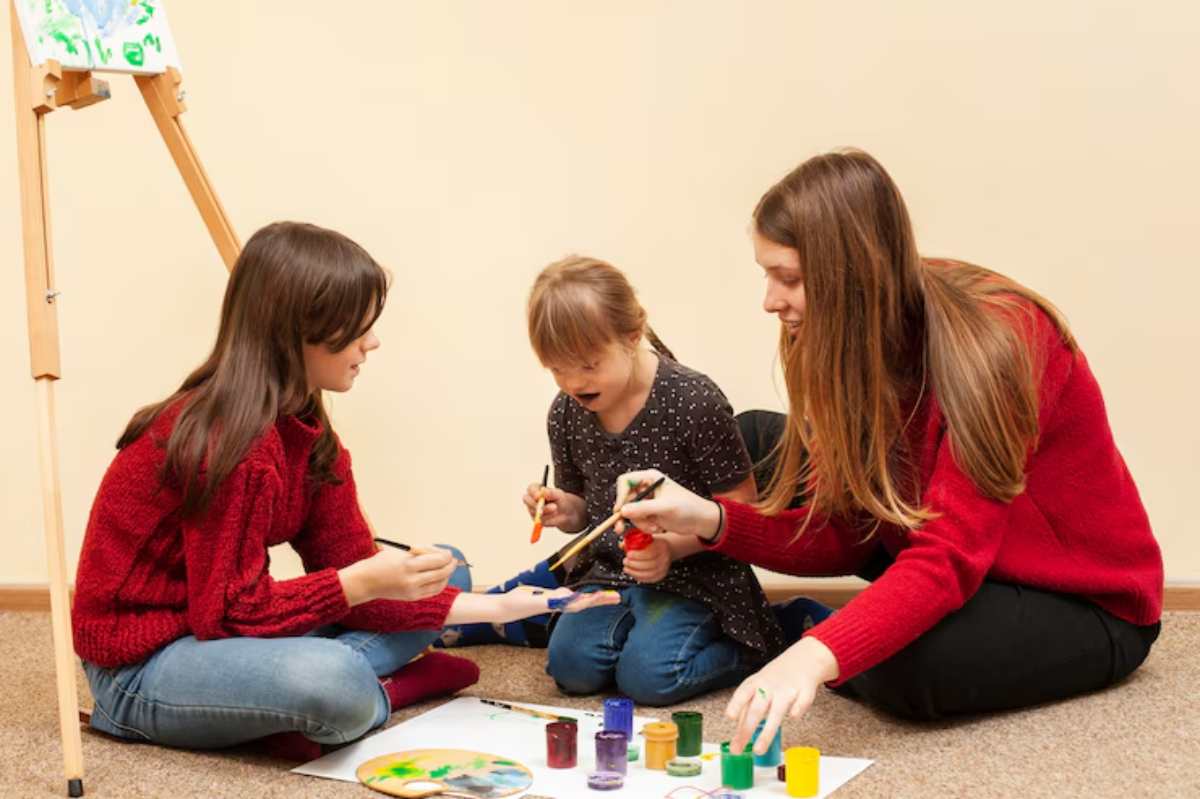
Teaching Financial Literacy Through Chore Allowances
Financial literacy isn’t a subject kids often learn in school, yet it’s one of the most important life skills they’ll ever need. For many families, the concept of a chore allowance offers a simple but powerful opportunity to start teaching kids how to manage money.
Smart parents see allowances as more than rewards for chores. They use them to teach kids about money. This includes saving, spending, and budgeting in ways that fit their age. By tying financial lessons to everyday responsibilities, kids start to see money as something earned, not just given.
In this post, we’ll look at why chore allowances are useful for teaching. We’ll see how they shape kids’ money habits. Plus, we’ll discuss what to consider when adding them to your family routine.
Why It Matters: Setting the Foundation Early
Children form money habits much earlier than most parents realise. Research from the University of Cambridge shows that core financial behaviours begin taking shape by age seven. That’s why starting early is so critical.
A chore allowance system helps your child link effort to reward. It also teaches personal finance in a simple, hands-on way. They’re not just hearing about money—they’re actively learning how to manage it.
Kids who know basic financial practices are likely to understand money better. They can avoid impulse buys and make big financial decisions with confidence as they grow.
Key Benefits of Chore Allowances

1. Teaches the Value of Work
When kids receive money in exchange for completing chores, they begin to understand that income is tied to effort. It creates an early connection between working and earning.
2. Encourages Budgeting and Goal Setting

Even simple decisions like saving up for a toy or choosing between two treats teach kids the value of planning and prioritising. Parents can encourage them to set short-term and long-term savings goals.
3. Instils the Concept of Delayed Gratification
One of the most valuable lessons chore allowances offer is the idea that waiting—and saving—can lead to bigger rewards. This mindset translates well into adulthood when managing credit, debt, and larger purchases.
4. Opens the Door to Real-Life Money Conversations
Helping kids learn to manage money opens up chances for family talks about spending choices. These talks help normalise conversations about budgeting and spending.
5. Promotes Responsibility Beyond Finances
A chore allowance system also supports overall personal responsibility. Kids learn to be accountable not just for tasks, but for managing what they’ve earned wisely.
Structuring the System: Best Practices for Success
To maximise the impact of a chore allowance system, it helps to have a structured and transparent approach.
Determine Which Chores Are “Allowance Worthy”
It’s important to separate regular household responsibilities from extra chores. For example:
- Daily responsibilities like brushing teeth, making the bed, or cleaning up toys can be expected without payment.
- Allowance-eligible chores might include walking the dog, vacuuming, or washing the car.
This teaches that while some responsibilities are part of being in a family, extra effort earns extra reward.
Set a Weekly Allowance Schedule
Consistency is key. Decide whether the allowance will be given weekly or biweekly, and stick to it. This builds routine and teaches children to plan their spending accordingly.
Use Cash, Not Just Digital Tools (At First)
Young children benefit from using physical money—it’s tangible and easier to grasp. As they grow older, you can introduce digital tools like allowance apps or bank accounts designed for kids.
Break Down the Allowance into Categories
A popular and effective method is the Spend-Save-Give system. For example:
- 50% for spending
- 30% for saving
- 20% for giving to charity or a cause This method teaches kids to view money through different lenses, not just consumption.
Additional Expert Tips & Common Mistakes to Avoid
Expert Tips
- Talk About Money Regularly: Normalise conversations about money. Ask questions like, “What are you saving for this week?” or “Why did you choose to spend your allowance on that?”
- Celebrate Savings Goals: When a child reaches a goal, acknowledge the achievement. This reinforces positive financial behaviour.
- Lead by Example: Kids learn by watching. If they see you saving, budgeting, and being thoughtful with money, they’re more likely to follow suit.
Common Mistakes to Avoid

- Paying for Every Task: If you give money for each household job, kids might think they should get paid for helping out with basic tasks.
- Inconsistency: Missing weeks or not tracking chores can confuse what is expected and reduce teaching chances.
- Using Allowances as Punishment: Withholding allowance for other issues can confuse kids about earning and spending.
Advanced Insights and Expert Recommendations
Adjust the System by Age
Your approach to chore allowances should evolve as your child matures:
- Ages 4–6: Focus on simple tasks and immediate feedback. Use small denominations to make amounts feel meaningful.
- Ages 7–10: Introduce savings goals and basic budgeting discussions. Begin explaining concepts like wants vs. needs.
- Ages 11–14: Encourage independent decision-making. Help them manage larger allowances and talk about long-term savings like big purchases.
- Ages 15+: Introduce banking tools, part-time jobs, or managing a debit card. Talk about income, taxes, and even basic investing concepts.
When to Introduce Digital Financial Tools
Once kids are comfortable with physical money, it may be time to transition into tools that mimic adult financial systems. Some recommended apps and platforms include:
- Greenlight: A debit card for kids with parental controls and educational features
- BusyKid: A chore-based earning app that includes options to invest
- GoHenry: Offers customisable chores, spending limits, and savings goals
These platforms make it easier for older kids to start building real financial skills within a safe, guided framework.
Encourage Philanthropy Early
One of the most overlooked aspects of financial literacy is generosity. Teaching kids to set aside some of their money for causes they care about helps them grow empathy and awareness of their community. Let them choose a charity or sponsor a small cause, even if it’s just donating to a school fundraiser.
From Coins to Confidence
A chore allowance isn’t just about handing out money—it’s about teaching kids how to handle it. Parents can turn everyday chores into chances to grow financially. This helps kids develop responsibility, independence, and lasting money skills.
This system helps children gain knowledge and confidence. With this, they can make smart financial decisions now and later. The earlier you start, the better prepared they’ll be. And the best part? You’re giving them tools they’ll use for the rest of their lives—one chore, and one dollar, at a time.


